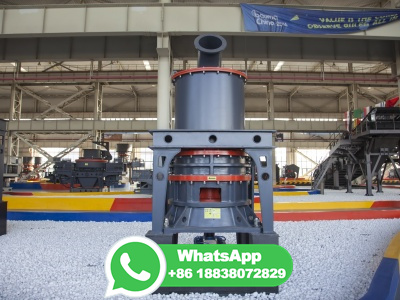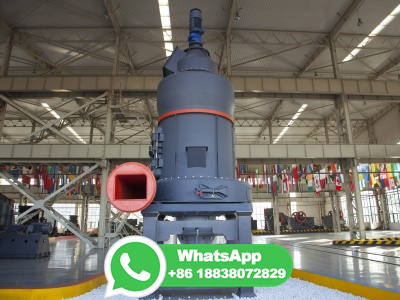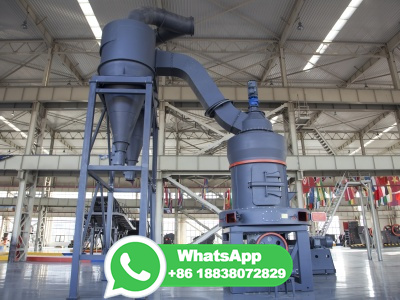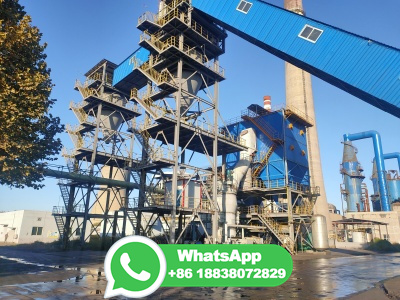
article{osti_, title = {Cokeoven byproduct modifications at National Steel's Great Lakes Div}, author = {Kalinowsky, R P and Platts, M}, abstractNote = {The rebuilt byproducts plant, and coal and coke material handling facilities began operation in Nov. 1992. Coal handling facilities were reused with repairs and modifications, such as new vibrating bin bottoms, bin blasters and ...
WhatsApp: +86 18203695377
Iron And Steel Production Process Description13 ... diagram of the iron and steel industry in Figure Coke production is discussed in detail in ... 90 British thermal units per cubic foot [Btu/ft3]) and is used as a fuel within the steel plant. Before it can be efficiently oxidized, however, the gas must be cleaned of ...
WhatsApp: +86 18203695377
1. OBJECTIVE: The main function of Coke Ovens is to convert coal into coke which is used as a fuel and reducing agent in the Blast Furnace. Its secondary function is to recover Volatile Matter and CO (Coke Oven) gas from coal and extract chemicals known as Coal Chemicals. CO gas produced is used for heating purposes in the plant.
WhatsApp: +86 18203695377
Coal Carbonization and Coke Oven Plant. Coal carbonization is used for processing of coal to produce coke using metallurgical grade coal. Coal carbonization involves heating of coal in the absence of air. Coke making process is multistep complex process and variety of solid liquids and gaseous products are produced which contain many valuable ...
WhatsApp: +86 18203695377
gas is then used as fuel for coke ovens or other plant combustion processes, or it is sold to nearby facilities. Approximately 11,000 scf of coke oven gas (at about 500 Btu/scf) is produced/ton of coal charged (EPA 2000; AISE 1998). About 40% of the gas is used to heat the coke ovens. Hazardous Cokemaking Wastes
WhatsApp: +86 18203695377
Coke was first produced commercially in England in the early eighteenth century. By the early to mid1800s, coke was being widely produced in Europe and the United States of America as the major fuel for blast furnaces. Coal carbonization is a process that yields metallurgical coke for use in ironmaking blast furnaces and other metalsmelting ...
WhatsApp: +86 18203695377
How does a coking plant work? How does this work? The coal is heated to C in the coke ovens. .. During the distillation process, a large amount of gas and smoke is generated, which after purification creates coke oven gas and other valuable byproducts, such as tar, sulphur, ammonia, naphthalene and benzole.
WhatsApp: +86 18203695377
Our modern coke ovens utilize highquality coal and advanced techniques to produce superior coke, a key component in the steelmaking process. Coal Chemicals Production Our coal chemical division extracts valuable byproducts from coal, such as coal tar and ammonium sulfate, contributing to our sustainability efforts and generating additional ...
WhatsApp: +86 18203695377
The American Iron and Steel Institute (AISI) has formulated a fouryear program to design, construct, and operate a 400,000 net ton per year ironmaking demonstration plant. The plant will employ the coalbased ironmaking process developed under a 1989 cooperative agreement with DOE.
WhatsApp: +86 18203695377
This raw coke oven gas needs to be cleaned of most of its contaminants before it can be used as a fuel at other operations at the Sparrows Point Plant. In response to environmental concerns, BSC decided to replace much of the existing coke oven gas treatment facilities in the two coal chemical Plants (A and B) with a group of technologies ...
WhatsApp: +86 18203695377
40 percent of cleaned oven gas (after the removal of its byproducts) is used to heat the coke ovens. The rest is either used in other production processes related to steel production or sold. Coke oven gas is the most common fuel for underfiring coke ovens. A typical coke manufacturing process is shown schematically in Figure Coke
WhatsApp: +86 18203695377
The coke works produces 120 mmscfd of coke oven gas in excess of the battery heating requirements. This surplus gas is used primarily in steel reheating furnaces and for boiler fuel to produce steam for plant use. In conjunction with blast furnace gas, it is also used for power generation of up to 90 MW. However, matching the consumption with ...
WhatsApp: +86 18203695377
This recommended guideline is applicable to Coke ovens By product department of an Integrated Steel Plant. 3. Process Brief: The Coke Ovens, By Product Plant Coke Dry Cooling Plant (CDCP) has following main sections . i. COKE OVENS: Various subsections of Coke Ovens and their functions are as complex follows: a) Coal Handling
WhatsApp: +86 18203695377
The annual worldwide generation of coke oven wastewater from coking plants during the processing of coke oven gas and from the recovery of coal derivatives is huge. It is estimated to be 75 9 10 7 ...
WhatsApp: +86 18203695377
A battery consists of 20 to 100 adjacent ovens with common side walls made of high quality silica and other types of refractory bricks. Typically, the individual coke ovens are 11 m to m long, m to m wide, and m to m high. The wall separating adjacent ovens, as well as each end wall, is made up of a series of heating ...
WhatsApp: +86 18203695377
This animation is just for understanding how coke oven gases are formed from coke in coal chemical plant
WhatsApp: +86 18203695377
Follow us. VISAKHAPATNAM: The Coke Oven and Coal Chemical Plant (CO CCP) department of RINLVSP achieved a milestone of 3 Million Oven Pushings since inception. CO and CCP is considered to be a ...
WhatsApp: +86 18203695377
The coke plant at the Sparrows Point Plant consist of three coke oven batteries and two coal chemical plants. The byproduct coke oven gas (COG) consists primarily of hydrogen, methane, carbon monoxide, nitrogen and contaminants consisting of tars, light oils (benzene, toluene, and xylene) hydrogen sulfide, ammonia, water vapor and other hydrocarbons.
WhatsApp: +86 18203695377
This paper focuses on the best way to produce methanol by Coke Oven Gas (COG) conversion and by carbon dioxide capture. The COG, produced in steelworks and coking plants, is an interesting source of hydrogen that can be used to hydrogenate carbon dioxide, recovered from flue gases, into methanol. The architecture of the reuse process is developed and the different process units are compared by ...
WhatsApp: +86 18203695377
TATA steel coke oven plant process . How making coke from Cole by coke oven plant
WhatsApp: +86 18203695377
Coke is a very strong macroporous carbonaceous material produced by the carbonization of a specific coal grade or of different coal blends at temperatures ⩾1400 K. Approximately 90% of coke produced from blends of coking coals is used to maintain the iron production process in a blast furnace (BF) [9].
WhatsApp: +86 18203695377
Elemental carbon in iron and steel enterprises primarily enters in the form of coal and raw materials containing carbon. In the coking process, washed coal is indirectly heated, and dry distilled through the combustion of gaseous fuels (natural gas, coke oven gas, etc.) in the combustion chamber and is converted into secondary energy such as coke and coke oven gas (COG).
WhatsApp: +86 18203695377
The coking process (coal to coke) occurs in the coke ovens. Finally, coke is removed using a pusher on one side and a coke guide on the other. The heat required for the coking process is supplied from the combustion chambers to the coke ovens through the refractory wall that separates the coke oven and the. Process modeling
WhatsApp: +86 18203695377
Waste Plastics Recycling Process Using Coke Ovens Fig. 5 shows the process flow of the waste plastic recycling by the Coke Oven from Waste Plastics to Chemical Raw Materials Method. After waste plastic containers and packaging are pretreated for crushing, removal of foreign matters and briquetting, they are mixed with blended coal, charged ...
WhatsApp: +86 18203695377
Also Coke oven department plays a very vital role in the energy aspect in integrated steel plants where coke oven gas is recovered during the carbonization process which is used as fuel in coke making as well as in other departments. ... An attempt has been made to develop a model for minimizing the variation in heating of coal during the ...
WhatsApp: +86 18203695377
Coke Ovens and Coal Chemical Plant. Figure 2: Coke Ovens. S. NaveenKumar (15345A0215) P a g e | 10 Vizag Steel Plant. Coal is converted into coke by heating the prepared coal blend charge in the coke ovens in the absence of air at a temperature of 10000C1050oC for a period of 16/19 hour.
WhatsApp: +86 18203695377
Britain In 1589, a patent was granted to Thomas Proctor and William Peterson for making iron and steel and melting lead with "earthcoal, seacoal, turf, and peat". The patent contains a distinct allusion to the preparation of coal by "cooking".
WhatsApp: +86 18203695377
The quality and quantity of plastic layer is of extreme important and it determines the inherent strength of coke matrix. • Coal chemical plant: The main byproduct in the process of coke making is crude coke oven gas and this has a lot of valuable chemicals. Coal chemical plant recovers ammonia.
WhatsApp: +86 18203695377
Coke is a grey, hard, and porous coalbased fuel with a high carbon content and few impurities, made by heating coal or oil in the absence of air—a destructive distillation process. It is an important industrial product, used mainly in iron ore smelting, but also as a fuel in stoves and forges when air pollution is a concern.
WhatsApp: +86 18203695377
Coke is essentially the remaining carbon and ash. With byproduct ovens, the volatiles and combustion products are collected downstream of the oven chamber and refined in a chemical plant to produce coke oven gas and other products such as tar, ammonia, and benzol. In heat recovery ovens, all the coal volatiles are oxidized within the ovens.
WhatsApp: +86 18203695377
Chemical analyses of cokeoven emissions revealed the presence of ... have been identified in air samples collected at coke plants. One metric ton of coal yields approximately 545 to 635 kg (1,200 to 1,400 lb) of coke, 45 to 90 kg (100 to 200 lb) of coke breeze (large coke ... at a steel plant from 1979 to 1983, by job classification. The exposure
WhatsApp: +86 18203695377
To combat global warming, industry needs to find ways to reduce its carbon footprint. One way this can be done is by reuse of industrial flue gases to produce valueadded chemicals. Prime example feedstocks for the chemical industry are the three flue gases produced during conventional steel production: blast furnace gas (BFG), basic oxygen furnace gas (BOFG), and coke oven gas (COG), due to ...
WhatsApp: +86 18203695377